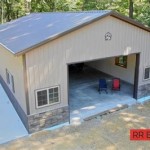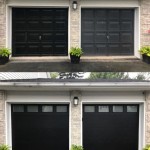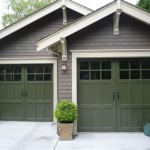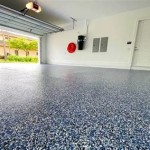How To Fix an Uneven Garage Floor
An uneven garage floor can present several issues, ranging from aesthetic concerns to structural problems and safety hazards. Pooling water can lead to concrete deterioration, while uneven surfaces can cause instability for stored items and create tripping hazards. Addressing these issues promptly is crucial for maintaining a functional and safe garage space. Several methods exist for repairing an uneven garage floor, depending on the severity and cause of the unevenness.
1. Grinding and Resurfacing for Minor Imperfections
For minor imperfections like shallow dips or slightly raised areas, grinding and resurfacing offer an effective solution. This method involves using a concrete grinder to level the high spots and then applying a resurfacing compound to fill in low areas and create a smooth, even surface. This is a relatively simple and cost-effective solution for minor unevenness. It’s important to thoroughly clean the concrete surface before grinding to remove any dirt, debris, or loose concrete. After grinding, a patching compound specifically designed for concrete is applied to the low areas and smoothed out to create a level surface.
Diamond grinding is a common method often chosen. Using specialized equipment, the operator carefully grinds down the concrete. It works best on surfaces that are not too deteriorated or showing severe cracking. Once the grinding is complete, the resulting dust must be thoroughly cleaned. For more pronounced imperfections, a self-leveling concrete resurfacing product can be applied after grinding to create a smooth, even finish.
2. Concrete Patching for Cracks and Holes
Larger cracks, holes, or spalling concrete require a more substantial repair approach than grinding. Concrete patching involves cleaning out the damaged area, applying a bonding agent, and filling the void with a concrete patching compound. This method is suitable for localized damage and can effectively restore the structural integrity of the floor. The type of patching compound used will depend on the size and depth of the repair. For deeper repairs, a patching mortar might be necessary, while smaller cracks can be filled with epoxy or acrylic-based fillers. Proper surface preparation is key to ensuring a strong bond between the existing concrete and the patching compound. This usually involves removing loose debris and cleaning the area with a wire brush.
After allowing the patching compound to cure completely, it can be ground down to match the surrounding floor level if necessary. This ensures a seamless and even finish. It’s important to choose a patching compound that is compatible with the existing concrete and designed for the specific conditions of the garage environment, such as exposure to moisture or temperature fluctuations. Applying a sealant after the patch has cured can help protect the repaired area and prevent future damage.
3. Mudjacking or Slabjacking for Significant Settling
When significant settling has occurred, causing large sections of the garage floor to sink, mudjacking or slabjacking may be the most appropriate solution. These methods involve injecting a slurry of cement, soil, and other materials beneath the sunken concrete slab to raise it back to its original level. Holes are drilled into the slab, and the slurry is pumped through these holes, filling the voids beneath and lifting the concrete. This method is less disruptive than completely replacing the concrete slab and is often more cost-effective.
Mudjacking is generally more affordable than slabjacking, but slabjacking is considered a cleaner and more precise method. Slabjacking utilizes a polyurethane foam, which expands to fill the void and lift the slab. The foam is lightweight and cures quickly, minimizing downtime. The choice between mudjacking and slabjacking will depend on factors such as the extent of the settling, the soil conditions, and the budget. Consulting with a professional foundation repair specialist is recommended to determine the best course of action.
4. Full Concrete Replacement for Extensive Damage
In cases of extensive damage, such as severe cracking, widespread spalling, or significant settling that cannot be addressed by other methods, a full concrete replacement may be the only viable option. This involves removing the existing concrete slab, preparing the subbase, and pouring a new concrete slab. While this is the most expensive and labor-intensive option, it provides a long-lasting solution and ensures a completely level and structurally sound garage floor.
Proper site preparation is crucial for a successful concrete replacement. This includes ensuring adequate drainage, compacting the subbase, and installing the appropriate reinforcement materials. The new concrete should be poured to the correct thickness and finished to create a smooth, durable surface. It’s crucial to allow the new concrete to cure completely before subjecting it to heavy loads or traffic. This typically takes several weeks. Considering the complexity and cost involved in a full concrete replacement, it is essential to consult with experienced concrete contractors and obtain multiple quotes before proceeding.

Get Concrete Slab Leveling To Fix Your Uneven Garage Floor Lift Right

Best Ways To Repair Uneven Concrete Floors

How To Fix Low Spots In Your Garage Floor All Floors

Is Your Garage Floor Uneven Mudjacking The Ideal Solution Lift Right Concrete

Foundation Floor Repair X

Avoid Safety Hazards Fix Ed Uneven Concrete Now

Concrete Garage Floor Repair And Leveling Services

Applying On Rough Concrete 3 Useful Tips

The Ultimate Guide To Cleaning Concrete Floors Pccne

Repairing Common Concrete Slab Problems Network
Related Posts








